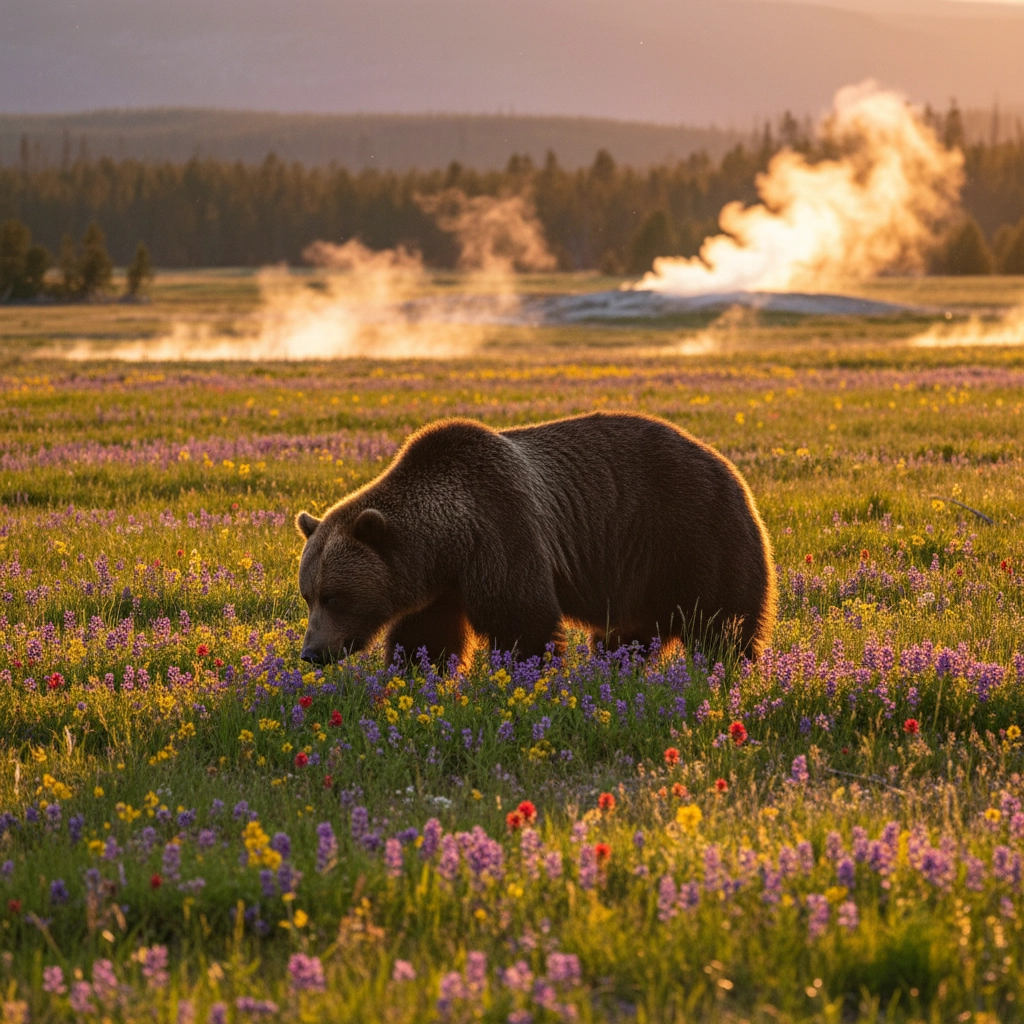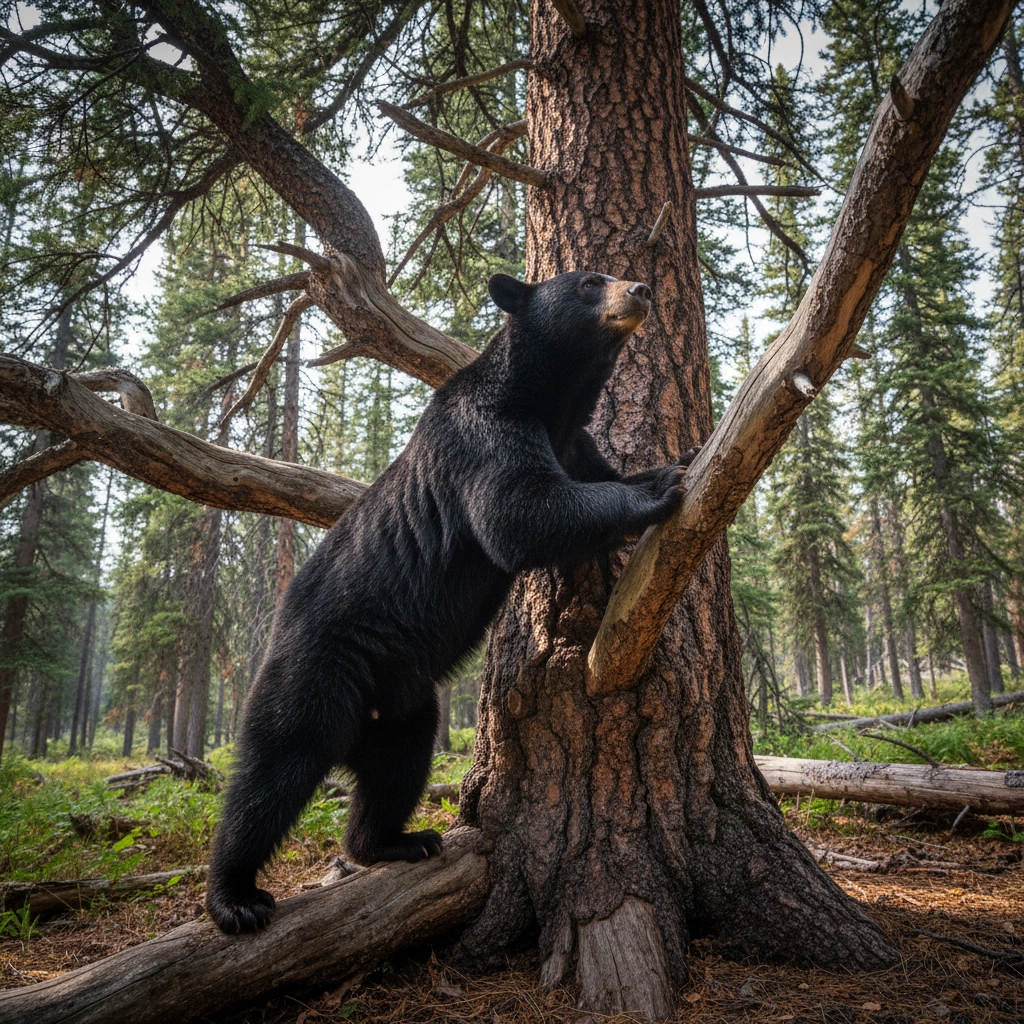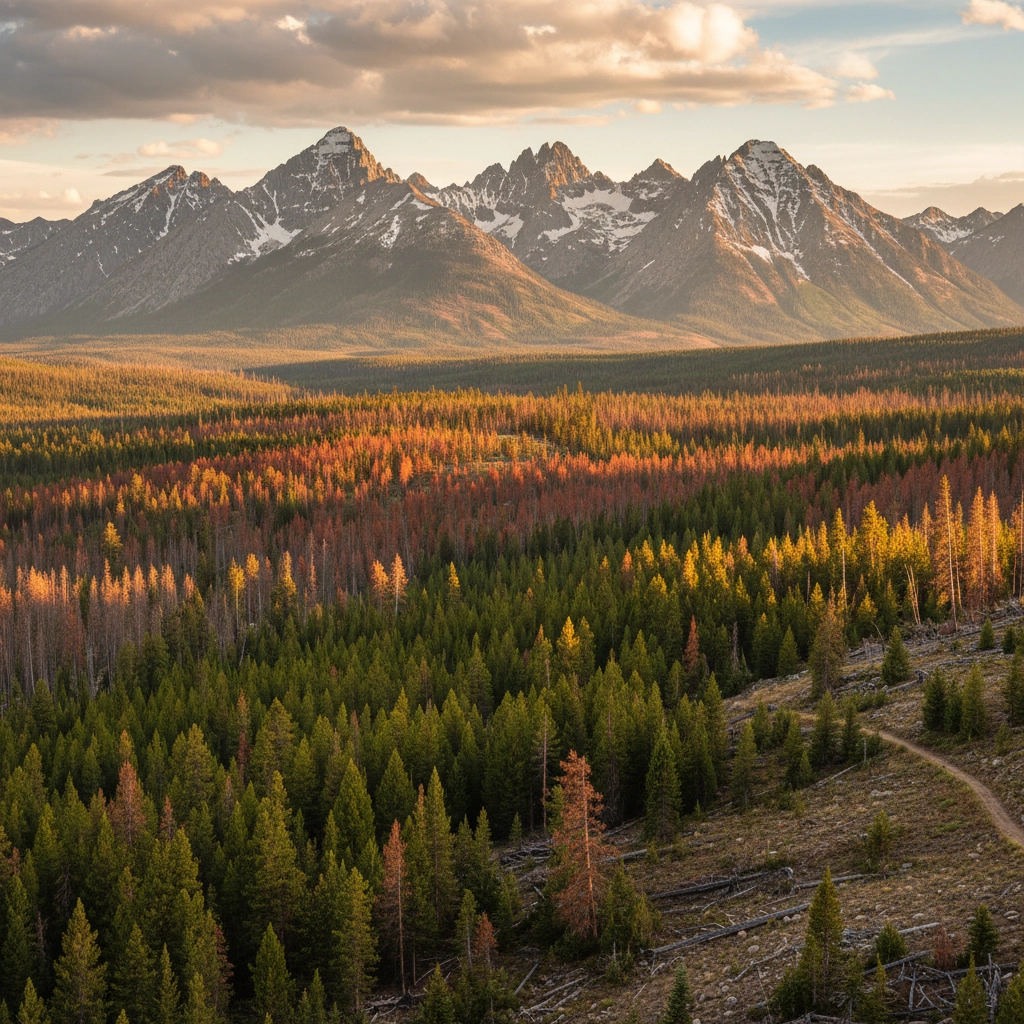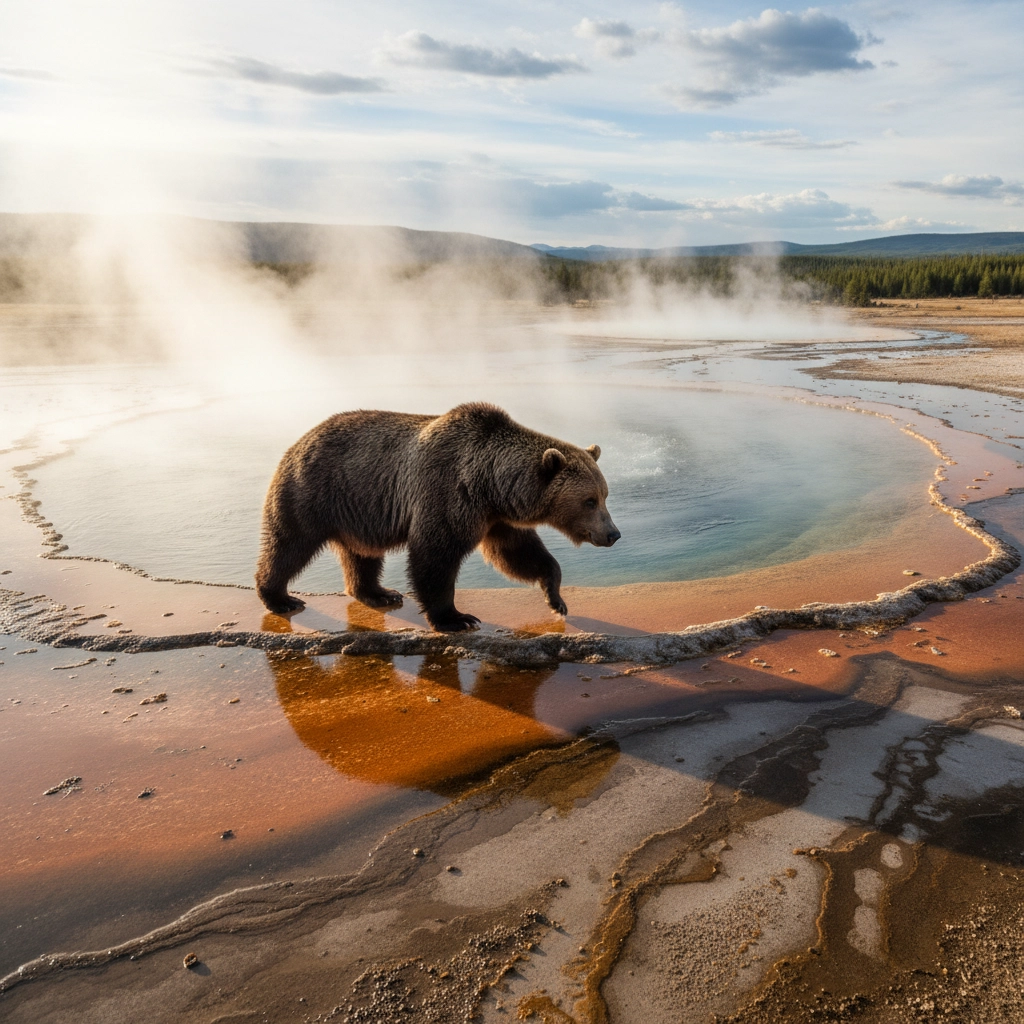Grizzly Bears and Black Bears: Survival Strategies in Yellowstone's Changing Ecosystem
- Caleb Mullenix
- 8 hours ago
- 5 min read
Understanding the complex survival strategies of Yellowstone's bears provides students with invaluable insights into ecosystem dynamics, conservation biology, and the intricate relationships between wildlife and environmental change. For educators planning field studies in America's first national park, examining bear ecology offers a compelling lens through which students can explore adaptation, resource competition, and the ongoing impacts of climate change on wildlife populations.
The Greater Yellowstone Ecosystem: A Dynamic Laboratory
The Greater Yellowstone Ecosystem (GYE) represents one of North America's most complex and variable environments, encompassing over 20 million acres of diverse habitats ranging from high-elevation alpine zones to thermal features found nowhere else on Earth. This ecosystem's dynamic nature creates both opportunities and challenges for the two bear species that call it home: grizzly bears (Ursus arctos) and black bears (Ursus americanus).
Food availability in the GYE experiences substantial seasonal, annual, and geographic variations, requiring bears to demonstrate remarkable behavioral flexibility. Unlike ecosystems with more predictable resource patterns, Yellowstone's bears must constantly adapt their foraging strategies, movement patterns, and energy conservation techniques to survive in this ever-changing landscape.

Grizzly Bear Survival Strategies: Masters of Adaptation
Grizzly bears in Yellowstone have evolved sophisticated survival strategies centered on maximizing caloric intake while minimizing energy expenditure. These apex omnivores demonstrate extraordinary dietary flexibility, consuming over 200 different food items throughout the year, from microscopic moths to large ungulates.
Seasonal Foraging Patterns
Spring foraging focuses primarily on emerging vegetation, winter-killed carrion, and spawning fish in accessible waterways. Grizzlies possess powerful shoulders and claws specifically adapted for digging, allowing them to excavate nutrient-rich roots, ground squirrels, and insect larvae during this critical period of post-hibernation recovery.
Summer represents peak foraging activity, with bears expanding their diet to include berries, nuts, and increased predation opportunities. The availability of army cutworm moths at high-elevation talus slopes provides an exceptional high-fat food source, with individual bears capable of consuming up to 40,000 moths per day during peak aggregations.
Critical Food Resources Under Pressure
Historically, high-calorie foods such as cutthroat trout and whitebark pine seeds have formed essential components of grizzly bear nutrition. However, the distribution and availability of these critical resources have undergone significant changes in recent decades. Whitebark pine cone crops show particular importance: annual variations in cone abundance directly correlate with changes in grizzly bear survival rates, reproductive success, movement patterns, and management intervention frequency.
The decline of native cutthroat trout populations due to non-native species introduction and climate-related factors has forced grizzlies to diversify their protein sources and expand their ranging behavior. This adaptation demonstrates the species' resilience while highlighting the interconnected nature of ecosystem health.
Black Bear Survival Strategies: Forest Specialists
Black bears in Yellowstone occupy distinct ecological niches compared to their larger grizzly cousins, demonstrating specialized adaptations for forested environments and different resource utilization patterns. These medium-sized omnivores exhibit remarkable climbing abilities and show greater tolerance for human proximity, creating unique survival advantages and challenges.
Habitat Preferences and Movement Patterns
Black bears typically favor dense forest cover, utilizing tree climbing as both an escape mechanism and foraging strategy. Their lighter body weight and curved claws make them exceptional climbers, allowing access to arboreal food sources unavailable to grizzlies. This vertical dimension to their habitat use provides additional foraging opportunities and predator avoidance options.
Dietary Specializations
While sharing some food sources with grizzlies, black bears demonstrate distinct preferences for mast crops, particularly acorns and hazelnuts. Their more efficient digestive systems for processing vegetation allow them to thrive on lower-quality plant materials, reducing direct competition with grizzlies for premium food sources.

The Challenge of Ecosystem Change
Climate change, habitat fragmentation, and evolving human land use patterns present unprecedented challenges for both bear species in the GYE. Rising temperatures affect the timing of snowmelt, plant phenology, and the distribution of key food sources, requiring continuous behavioral adaptations.
Whitebark Pine Crisis
The decline of whitebark pine forests due to mountain pine beetle outbreaks, white pine blister rust, and changing fire regimes represents one of the most significant ecosystem challenges facing grizzly bears. These high-elevation trees produce protein-rich seeds that provide crucial pre-hibernation nutrition. Students examining whitebark pine ecosystems can observe firsthand how species interactions cascade through food webs.
Shifting Thermal Regimes
Yellowstone's unique geothermal features create localized microclimates that influence vegetation growth patterns and extend growing seasons in specific areas. Bears demonstrate remarkable intelligence in utilizing these thermal advantages, with some individuals establishing preferred areas near hot springs and geysers where food remains accessible longer into winter months.

Conservation Success and Ongoing Challenges
The grizzly bear population recovery in the GYE represents one of North America's most significant conservation achievements. From a low of approximately 136 individuals in 1975, the population has recovered to an estimated 700+ bears through dedicated management efforts, habitat protection, and strict human-bear conflict mitigation measures.
Contemporary Management Approaches
Current conservation strategies emphasize long-term sustainability rather than simple population recovery. This approach recognizes that bear populations and their habitat must be managed to accommodate anticipated future changes in food resource availability driven by climate and environmental factors. The Conservation Strategy specifically addresses the need for managers to understand how bears respond to continued changes in food resource availability and distribution.
Human-Bear Coexistence Protocols
Successful bear conservation requires comprehensive human-bear conflict prevention programs. These initiatives include food storage requirements, waste management protocols, and public education programs that reduce negative bear-human interactions while maintaining natural foraging behaviors.
Educational Opportunities for Student Research
Yellowstone's bear populations provide exceptional learning opportunities for students studying wildlife ecology, conservation biology, and ecosystem management. Field studies can incorporate multiple scientific disciplines while emphasizing real-world conservation applications.
Recommended Study Areas
Students can examine bear habitat use patterns, analyze scat samples for dietary content, study GPS collar data interpretation, and participate in citizen science monitoring programs. These hands-on experiences connect theoretical ecological concepts with practical conservation applications.
Safety Protocols for Field Studies
Ensure all students receive comprehensive bear safety training before entering the field. Maintain proper food storage protocols, carry bear spray, travel in groups of four or more, and make noise while hiking to avoid surprise encounters. Emergency response procedures must be clearly established and practiced before field work begins.

Research Applications and Career Connections
Bear research in Yellowstone connects to numerous career paths in wildlife biology, natural resource management, environmental monitoring, and conservation policy. Students can explore how scientific research directly influences management decisions and policy development through ongoing bear studies.
Data Collection Methodologies
Modern bear research utilizes GPS collaring technology, genetic sampling techniques, remote camera surveys, and habitat modeling to understand population dynamics and ecosystem relationships. These technological applications demonstrate how scientific innovation enhances wildlife conservation efforts.
Future Outlook: Adaptation and Resilience
The successful persistence of both grizzly and black bear populations in Yellowstone depends on maintaining sufficient habitat diversity and food resource availability across variable environmental conditions. Both species demonstrate remarkable adaptability, yet their long-term survival requires continued ecosystem protection and active management.
Understanding bear survival strategies provides students with essential insights into ecosystem resilience, species adaptation, and the complex relationships between wildlife conservation and environmental change. These lessons extend far beyond Yellowstone, offering frameworks for understanding wildlife challenges across North America and beyond.
Through careful observation and scientific study of these magnificent animals, students develop deeper appreciation for ecosystem complexity while gaining practical experience in wildlife research methodologies and conservation science applications that will serve them throughout their academic and professional careers.



Comments